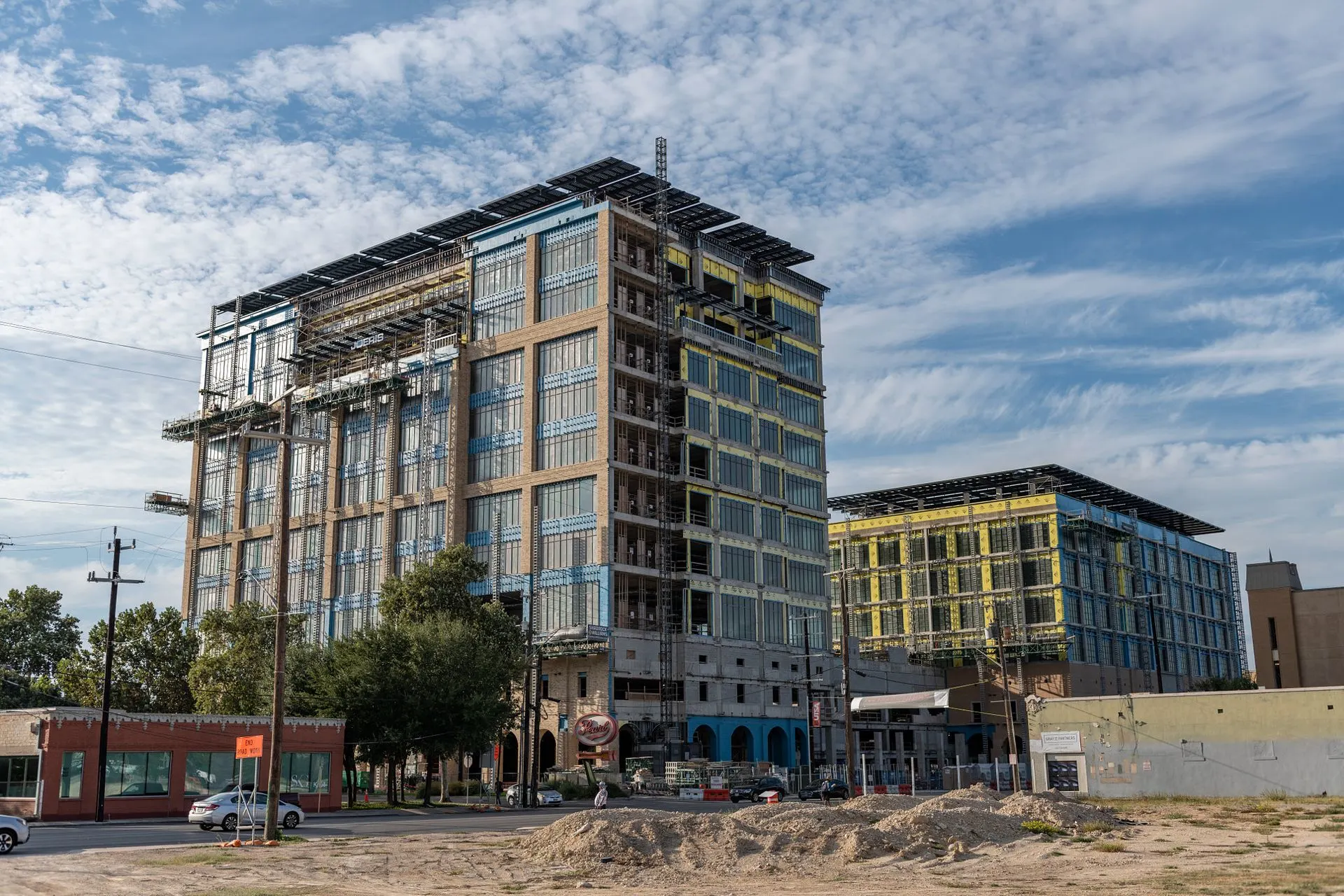Table of Content
The recent decision by the Indian government to slash the GST rate on construction materials like cement, steel, tiles, and other building components has sparked new optimism in the real estate market. Developers’ body CREDAI has assured homebuyers that these savings will be passed on, potentially making homes more affordable across the country. While the impact may be marginal in metros where land prices dominate, industry leaders believe that smaller cities and towns could see a more meaningful reduction in property costs, especially as construction materials form a larger portion of overall project expenses.
This move is being hailed as a step toward reviving buyer sentiment, easing affordability challenges, and encouraging demand in a housing market that has been struggling under the weight of high input costs and inflation.
What CREDAI Announced
At the 23rd edition of NATCON held in Singapore, CREDAI leadership outlined their position on the GST cuts. Chairman Boman Irani confirmed that developers are committed to transferring the benefits of reduced input costs to buyers.
“We are still evaluating how much of the cost benefit can be passed on. But, we will pass it to the buyers, so if the end price is less, then the GST will be less, and the stamp duty will be less,” Irani explained.
This assurance comes at a crucial time when homebuyers are grappling with rising property prices, and affordability has become a key concern. CREDAI stressed that their business model relies on volumes, and improving efficiency remains central to ensuring that maximum benefits reach the end consumer.
Also Read: GST Rate Cuts: Is Building on Your Own Plot Cheaper Than a Gated Apartment?
Why the GST Rate Cut Matters
The government’s move to lower the GST rate on key construction inputs such as cement and steel has the potential to ease one of the biggest cost drivers in the real estate sector.
- Construction costs form a major share of housing prices in most cities.
- A reduction in GST rate lowers the base cost of materials, directly reducing the overall project cost.
- When the base price falls, stamp duty (calculated as a percentage of property value) also reduces, creating a double benefit for buyers.
For instance, if a 10% cut in GST rate on cement brings down the cost of a bag by ₹30, the cumulative savings for large housing projects could run into lakhs of rupees. Developers argue that while land remains outside the purview of GST, easing construction costs can still bring meaningful relief.
Regional Impact: Smaller Cities vs Metros
The effect of the GST cuts will not be uniform across India. CREDAI leaders have pointed out that Tier-2 and Tier-3 cities stand to gain the most.
- Smaller cities: In places like Lucknow, Nagpur, or Indore, land costs are relatively modest. Here, construction materials form a bigger share of overall project expenses, meaning any reduction in GST rate can significantly reduce final home prices.
- Metro cities: In markets like Mumbai or Delhi NCR, land prices dominate the cost structure. Since the GST cut only affects construction materials, the overall reduction in home prices may be limited.
As Shekhar Patel, president of CREDAI, explained: “If the GST on cement is cut by 10%, and a bag of cement currently costs ₹350, then the price should drop by about ₹30. So we have to see how much of this reduction actually translates into savings in the construction sector.”
Developers’ Perspective and Challenges
While CREDAI’s assurance is encouraging, developers caution that the real impact depends on suppliers. Cement and steel, two of the most crucial inputs, are controlled by a small number of suppliers, and their pricing practices will determine how much of the GST savings reach the market.
Another challenge is stamp duty. Developers argue that despite the lower GST rate, high stamp duty imposed by state governments continues to add a significant burden on homebuyers. CREDAI has urged state authorities to consider rationalising this levy to complement central government reforms.
At the same time, developers emphasise that their business depends on volumes. With reduced costs and higher affordability, they expect increased demand, which in turn could create room for further efficiencies in pricing.
Buyer Sentiment and Market Response
The announcement of GST cuts has already sparked optimism among potential buyers. CREDAI noted a surge in inquiries, particularly in the mid-segment housing market ranging from ₹1 crore to ₹4 crore.
Buyers, who have been delaying decisions due to rising interest rates and property costs, now see these cuts as a signal of improving affordability. The psychological effect of “something positive happening” in the market is expected to drive more site visits and bookings in the upcoming festive season.
This sentiment boost could be exactly what the market needs to overcome the affordability challenges that have been weighing it down.
Real Estate as a Hedge Against Inflation
CREDAI leadership also highlighted the role of real estate as a reliable hedge against inflation. Chairman Boman Irani explained:
- All costs, from construction materials to labour, are tied to inflation.
- Real estate naturally adjusts to inflation, ensuring that the value of assets grows in line with the economy.
- For instance, a home purchased today for ₹40 lakh could appreciate by 7–10% annually, in line with inflation, protecting the buyer’s wealth.
Unlike cash savings, which lose value over time due to inflation, real estate investments not only preserve but often enhance purchasing power. This characteristic makes housing one of the most dependable long-term wealth builders.
Also Read: Urban Footprint in 8 Cities Expands to 4,308 Sq Km, Pune Tops Growth
What’s Next After GST Rate Cuts
Industry experts believe it will take a few months to see how the GST cuts ripple through the supply chain. Once suppliers adjust their pricing, developers can calculate the actual savings and pass them on to buyers.
Key expectations going forward include:
- Clarity on real savings once input suppliers reflect the tax cut.
- Boosted housing affordability in smaller cities where construction costs dominate.
- Pressure on state governments to reconsider high stamp duties.
- A possible festive season demand surge as buyers take advantage of reduced costs and attractive offers.
For the long term, industry leaders stress the importance of continued reforms and stable policies that keep housing affordable while maintaining quality and compliance standards.
Conclusion
The government’s decision to cut the GST rate on construction materials has been welcomed by developers and homebuyers alike. CREDAI’s assurance that these benefits will be passed on to buyers has strengthened confidence in the market, especially in smaller cities where the cost structure makes the impact more visible.
While challenges such as supplier pricing and high stamp duties remain, the move marks a significant step toward easing affordability pressures and revitalising demand. With rising buyer sentiment, improved cost structures, and real estate’s role as a hedge against inflation, the sector may be entering a more optimistic phase.
The bottom line: if GST rate cuts are implemented effectively and supported by state-level reforms, India’s housing sector could witness a meaningful boost in affordability and growth in the years ahead.









Ans 1. The government has reduced GST rates on key construction materials like cement, steel, and tiles to ease input costs for housing projects and improve affordability for buyers.
Ans 2. Lower GST on construction materials reduces overall project costs, which developers like CREDAI have assured will be passed on to buyers, making homes slightly more affordable.
Ans 3. CREDAI represents leading developers, and its commitment to passing on GST savings builds trust that the benefits will not stop at suppliers or builders but reach end consumers.
Ans 4. No, smaller cities where land is cheaper will benefit more because construction costs form a larger share of the total project cost, unlike metros where land dominates.
Ans 5. While actual savings depend on suppliers and project scale, a 10% GST cut on cement alone could reduce costs by ₹30 per bag, adding up to lakhs in large projects.
Ans 6. Since cement and steel are controlled by a few major suppliers, the extent of cost reduction for buyers depends heavily on whether these suppliers fully reflect the GST cuts in their pricing.
Ans 7. Developers argue that high state-level stamp duties still add significantly to property costs, so reducing them alongside GST cuts would provide more meaningful relief to buyers.
Ans 8. The announcement has boosted buyer sentiment, with more inquiries and site visits, particularly in the mid-segment housing market, as people see affordability improving.
Ans 9. Real estate naturally appreciates in line with inflation since material and labour costs rise over time, ensuring that property values protect and grow the buyer’s wealth.
Ans 10. If implemented effectively and supported by further reforms, GST cuts could improve affordability, revive demand in Tier-2 cities, and give the sector a much-needed growth push.